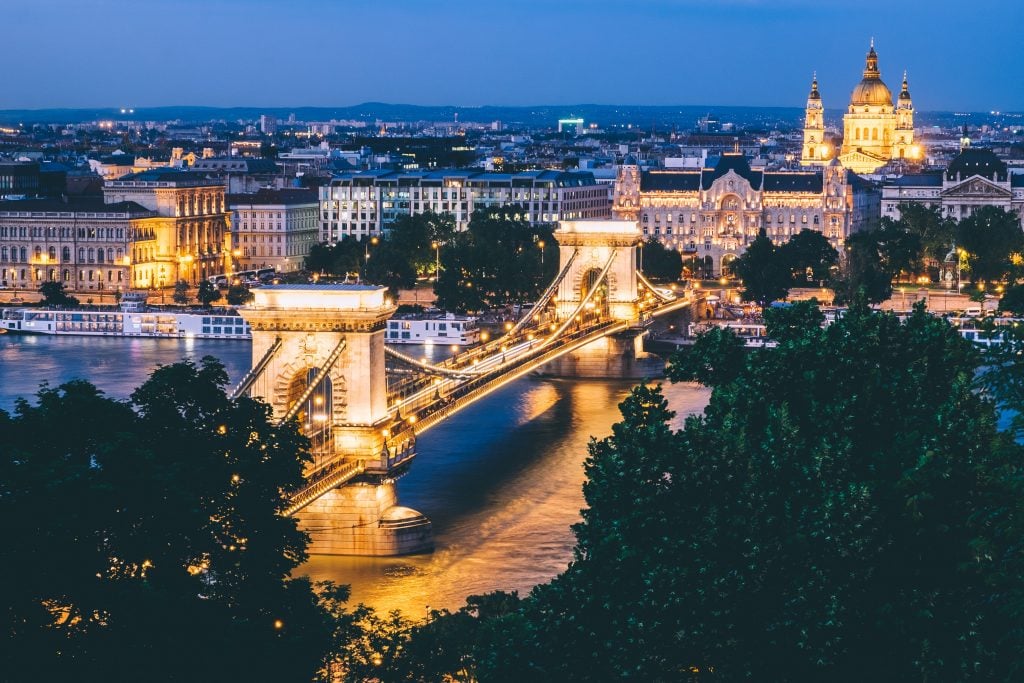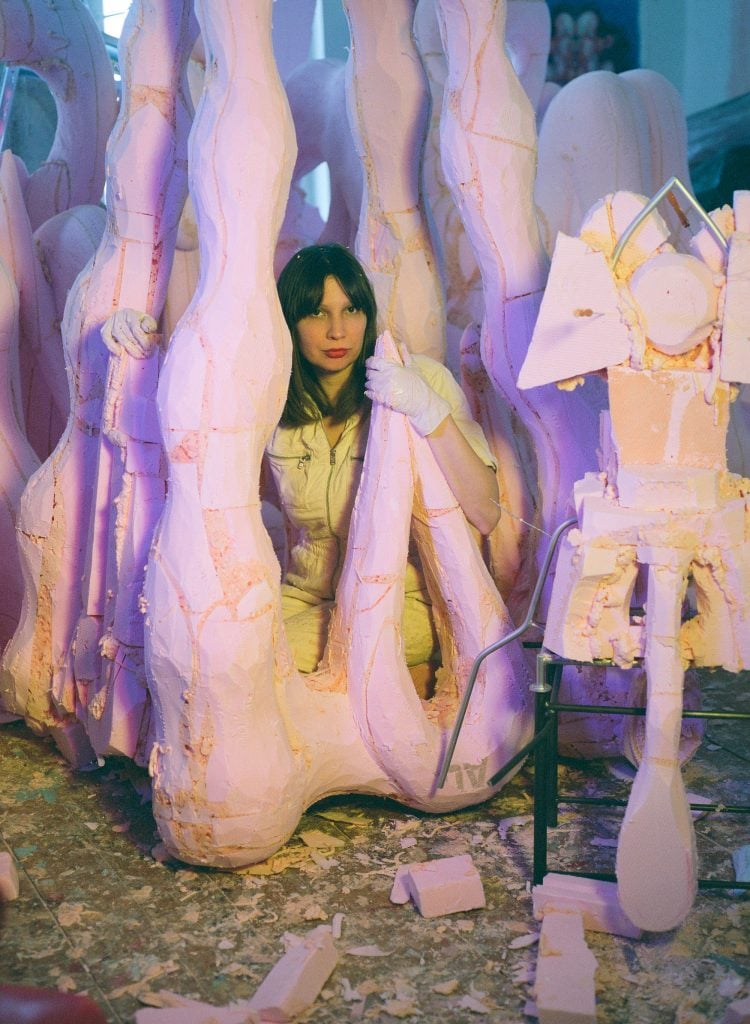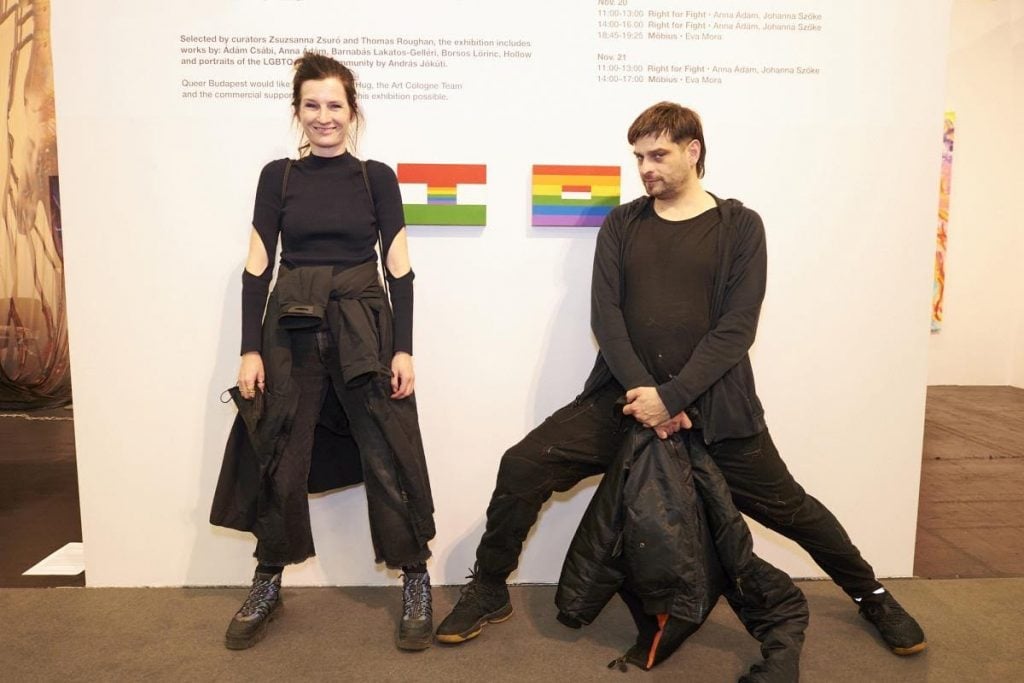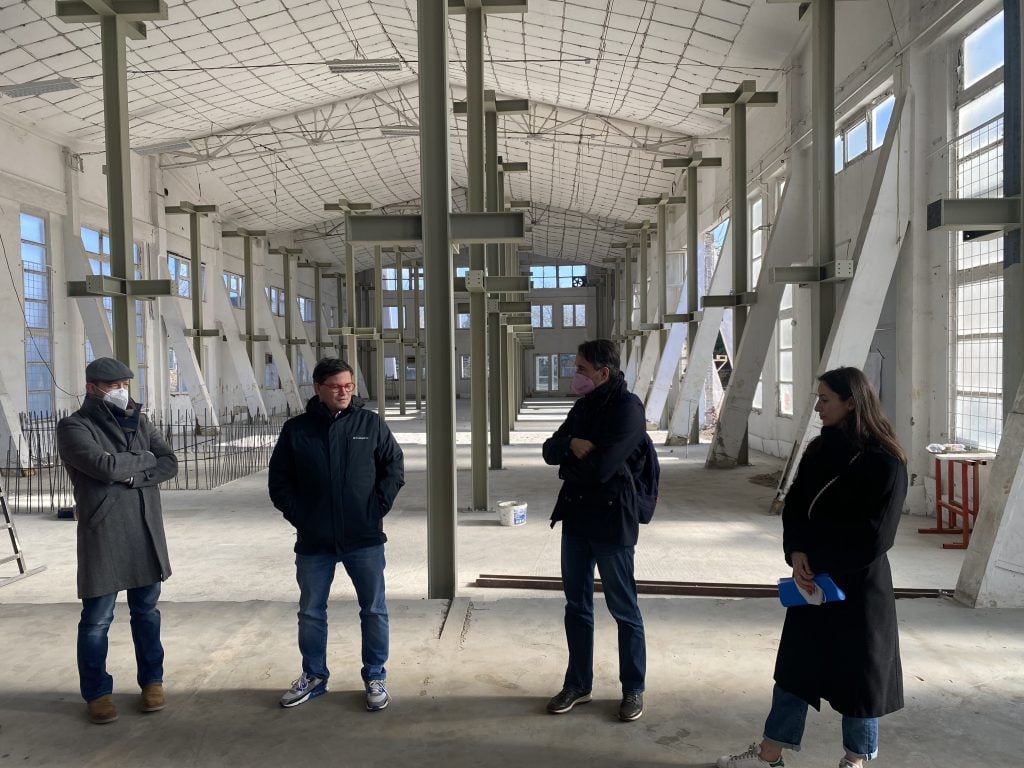Travel
Against All Odds, Budapest’s Art Scene Is Flourishing Amid Rising Autocracy. Meet the Movers and Shakers Leading the Way
If you were expecting a cultural desert in Hungary, where the government can often be hostile to culture, think again.

If you were expecting a cultural desert in Hungary, where the government can often be hostile to culture, think again.

Dorian Batycka

In the world of contemporary art, the ability to survive—and even thrive—depends largely on freedom of expression and a certain level of permissiveness if not support from official channels. But in countries like Hungary, where state funding has been dwindling and governments are sometimes even taking hostile measures against art, rather than a cultural desert, you will find surprisingly fertile ground for home-grown talent.
Earlier this month, the Ludwig Museum in Budapest hosted the launch of János Háy’s book of short texts paired with drawings by the late Roma Dadaist, OMARA (Mara Oláh), one of Hungary’s best known and yet misunderstood painters. At the Venice Biennale’s first Roma Pavilion in 2007, OMARA famously handed the billionaire financier, George Soros, her glass eye. Shocked, he dropped it, but from that moment on he began to support her work.
Her paintings, ranging from works on canvas that untangle Roma identity and the vulnerability that her community has historically faced, may not have been unfamiliar to the young, mostly progressive art crowd that gathered at the Ludwig Museum recently. But for critics, who point to the fact that the museum receives the majority of its funding from Hungary’s ruling right-wing nationalist Fidesz party, the idea that such an artist should be collected and celebrated at the institution might have raised eyebrows just a few years ago. The situation in Hungary is changing however, and not everything is as politically and culturally polarizing as it may seem.
According to Peter Bencze, the founder of Everybody Needs Art, one of the city’s most active independent curators and a self-described “hybrid gallerist”, the art scene in Budapest benefits enormously from a strong and supportive local community. “I think part of what makes an artist like OMARA so interesting is her ability to fluctuate between different social strata, an aspect of her work that I think represents the best of Hungarian art more generally,” he told Artnet News.
In addition, a number of new independent institutions have started to spring up. Over the last two years—despite the global pandemic—the abundance of cheap and affordable studio space for rent in Budapest has also gone a long way to support the city’s scene.
Aqb, a 4,000-square-foot studio complex and gallery space founded by the German-born entrepreneur Wolfgang Bartesch in 2004, is home to dozens of contemporary artists, including a number who are pushing the Hungarian scene forward in remarkable ways.

Zsófia Keresztes in her studio. Photo: Éva Szombat
One of them, Zsófia Keresztes, will be representing the country at the 2022 Venice Biennale. Keresztes is known for incredibly ornate sculptures covered with colorful tesserae, large post-figurative works that explore themes like identity and mysticism. Her show in Venice, After Dreams: I Dare to Defy the Damage, curated by Mónika Zsikla, is partly inspired by a scene in Hungarian writer Antal Szerb’s 1937 book Journey by Moonlight, about a young man who discovers childhood memories through mosaics.
Aqb is also home to the art duo Lőrinc Borsos, who in November had an installation in this year’s Art Cologne in a section on Queer art in Budapest. The artists—known for their eerily macabre sculptures and for hosting the city’s best underground raves—have become something like the enfants terribles of Budapest.

Budapest’s enfants terribles Lőrinc Borsos are known for their macabre sculptures as well as their underground raves
Another artist ensconced in aqb, Botond Keresztesi, has become one of Hungary’s most exciting painters, whose diverse inspiration ranges from Futurism to the pulp action movie RoboCop, from the medieval painter Cimabue to other greats of the Italian Renaissance. While Keresztesi has made a name for himself abroad, working with big international galleries like Galerie Derouillon in Paris and the Hole in NYC, he keeps a relatively low profile at home.
Also taking their work beyond Hungary, the Budapest-based artists collective OFF Biennale recently announced the premier of 14 projects at next year’s international exhibition Documenta in Kassel, Germany. The works will look at how ecology, Eastern European nationalism, and political imagination are transforming society today.
But it’s not just artists transforming Budapest. Along with galleries like Ani Molnár and Trafo, both of which have long histories in the city, a new cohort of spaces is starting to sprout up, including Q Contemporary. a sprawling new contemporary art space opened in 2020 by Hong-Kong heiress and art collector Queenie Rosita Law. Her new gallery in Hong Kong, Double Q, will also be representing mostly central and Eastern European artists, such as Márton Nemes, József Csató and Gizella Rákóczy. “One of my goals is to provide a platform for both emerging and historically overlooked artist,” Law told Artnet News. “I would like to expand their careers beyond the region.”
This November, the Hungarian collector and real estate investor, Zoltán Aczél, invited selected members of the press to tour a soon to open contemporary arts center in Budapest. It will be the third location Aczél has opened to house his growing collection of contemporary and Modern art. Named after Aczél’s late mother, the Éva Kahán Foundation already has one venue in Budapest, alongside one in Vienna’s Second district, where works from the foundation by the likes of Gustav Klimt are shown alongside younger artists like Monika Grabuschnigg and Andreas Greiner. Located in a former industrial warehouse, the new space is currently being renovated to the tune of €3m, and is slated to open in early 2022.

Collector Zoltán Aczél is opening a third venue to show works from his Éva Kahán Foundation in an industrial warehouse outside Budapest. Photo: Dorian Batycka.
The foundation collects mainly artists from Central and Eastern Europe, including through a well-funded residency in San Sano, Tuscany, where 10 artists have been invited to create new work on site next year. “The region has an incredible richness of original artists who are only just beginning to be recognized internationally,” says Marie-Eve Lafontaine, the foundation’s artistic director, told Artnet News. “These artists, for better or worse, have always had to grapple with a heritage of subtly political and ideologically motivated creative output, which is of course partly a result of their own histories and partly a result of the current geo-political situation.”
The concentration of artistic talent in Budapest makes the city enticing to other collectors too. Last year, several Hungarian collectors established a committee called “friends of contemporary art” who pool their money to support new acquisitions for the collection of the Hungarian National Gallery (MNG). Each committee member is allotted €10,000 to buy works for the museum. The group—established by acb Gallery founder Gábor Pados, together with collectors Katalin Spengler and Zsolt Somlói, Attila Brezóczki, László Vágó and Sándor Gönczy— aims to support emerging artists and to foster artistic growth in Hungary.
With so much going on, Budapest today feels more alive than ever. With artists benefiting from cheap and affordable studios, to new collectors entering the market, it seems that the historic city on the Danube is poised again to become one of Europe’s most exciting art destinations.